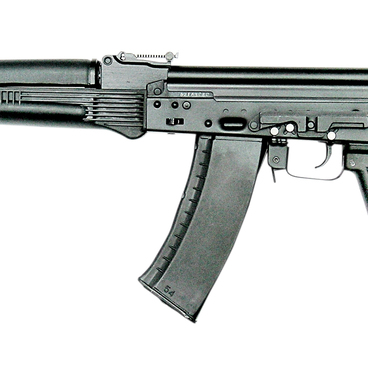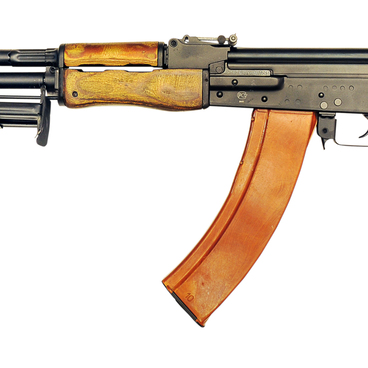In the 1970s, airborne and special forces operations showed that the army needed a new close combat assault rifle. Paratroopers, military intelligence operatives, signalers, sappers, combat vehicles and tanks, aircraft, and artillery squads needed a shortened assault rifle. The motorized infantry troops were also interested in a compact weapon, as they rode in combat vehicles, parachuted from helicopters and marched in harsh conditions.
At first, military experts tested a new 5.45 mm cartridge. They determined that muzzle velocity equal to that of a 7.62 mm bullet fired from an AKM could be achieved even with a shortened barrel.
In 1973, the Ministry of the Defense Industry and the Main Missile and Artillery Directorate announced a competition to create a new assault rifle. Among the participants were Sergey Simonov, Igor Stechkin, Yevgeny Dragunov, and Mikhail Kalashnikov.
Semyon Furman headed the development of a shortened weapon in Kalashnikov’s engineering department. At the end of 1976, the new assault rifle was sent to field tests in the motor rifle and amphibious divisions of the Transcaucasian Military District. The model had a serious drawback: after firing and two days without cleaning, the muzzle break stuck to the barrel and could not be unscrewed. This flaw was fixed, and in 1979, AKS-74U was put into service. It was used by the units of the Ministry of Internal Affairs and security entities.
The main advantages of the AKS-74U were its small size and a 5.45 mm cartridge, common for small arms. However, the pointed bullet often ricocheted indoors and outdoors. Therefore, in the 1990s, a new weapon for police was developed. AKS-74U units were used in a 9 mm submachine gun PP-19 Bizon 2, created by the sons of Izhevsk gun designers Kalashnikov and Dragunov — engineers Victor Kalashnikov and Alexey Dragunov. The Ministry of Internal Affairs put the gun into service in 1996.
At first, military experts tested a new 5.45 mm cartridge. They determined that muzzle velocity equal to that of a 7.62 mm bullet fired from an AKM could be achieved even with a shortened barrel.
In 1973, the Ministry of the Defense Industry and the Main Missile and Artillery Directorate announced a competition to create a new assault rifle. Among the participants were Sergey Simonov, Igor Stechkin, Yevgeny Dragunov, and Mikhail Kalashnikov.
Semyon Furman headed the development of a shortened weapon in Kalashnikov’s engineering department. At the end of 1976, the new assault rifle was sent to field tests in the motor rifle and amphibious divisions of the Transcaucasian Military District. The model had a serious drawback: after firing and two days without cleaning, the muzzle break stuck to the barrel and could not be unscrewed. This flaw was fixed, and in 1979, AKS-74U was put into service. It was used by the units of the Ministry of Internal Affairs and security entities.
The main advantages of the AKS-74U were its small size and a 5.45 mm cartridge, common for small arms. However, the pointed bullet often ricocheted indoors and outdoors. Therefore, in the 1990s, a new weapon for police was developed. AKS-74U units were used in a 9 mm submachine gun PP-19 Bizon 2, created by the sons of Izhevsk gun designers Kalashnikov and Dragunov — engineers Victor Kalashnikov and Alexey Dragunov. The Ministry of Internal Affairs put the gun into service in 1996.

